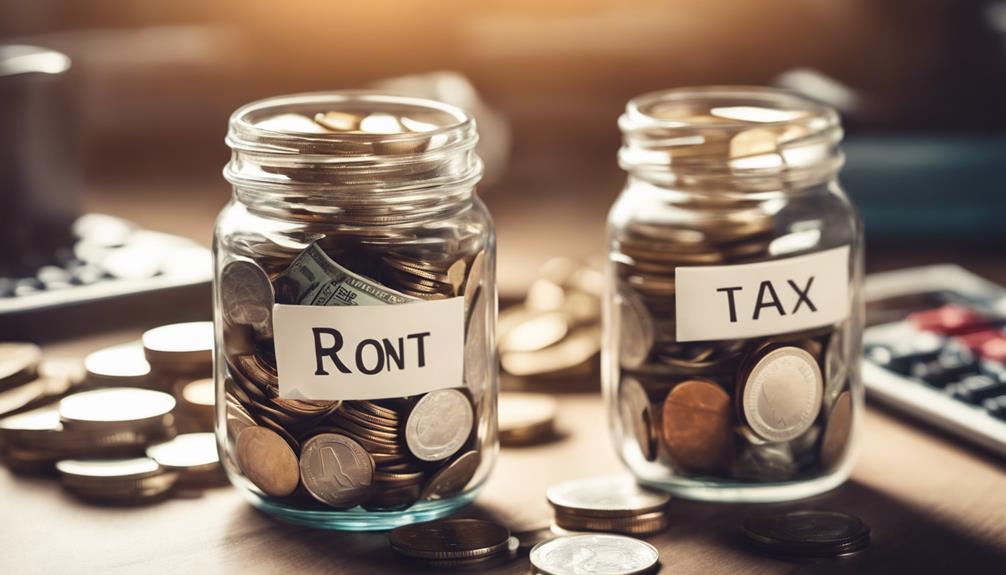In the realm of retirement planning, the self-directed IRA offers unique investment potential and control over one’s financial future, surpassing traditional accounts. With SDIRAs, diversify portfolios with alternative assets like real estate and cryptocurrencies for potential high returns. Enjoy tax benefits such as deductible contributions and tax-deferred growth, optimizing wealth accumulation. Craft personalized strategies aligned with goals, utilizing the autonomy and flexibility to adapt to market trends. Setting up a self-directed IRA involves finding a qualified custodian specialized in alternative investments and actively managing your portfolio. Discover the power of SDIRAs for a robust retirement plan.
Key Takeaways
- Flexibility to invest in alternative assets like real estate and cryptocurrencies.
- Control over investment decisions tailored to individual financial goals.
- Tax advantages including deductions, tax-deferred growth, and potentially tax-free withdrawals.
- Opportunity for higher returns through diverse investment options.
- Ability to diversify retirement portfolios beyond traditional assets for optimized growth.
Advantages of Self-Directed IRAs
Self-Directed IRAs offer investors the flexibility to diversify their retirement portfolios beyond traditional assets. With a Self-Directed IRA (SDIRA), individuals can invest in alternative assets like real estate, private equity, precious metals, and cryptocurrencies, providing the potential for higher returns compared to traditional IRAs. One of the key advantages of SDIRAs is the tax benefits they offer. Account holders may enjoy tax breaks on earnings and the ability to grow investments tax-deferred or tax-free, enhancing the growth potential of their retirement savings.
Investors using SDIRAs have the freedom to tailor their investments to align with their financial goals, granting them greater control over their retirement savings. This personalized diversification allows for a more strategic approach to investing, beyond the limitations of traditional stocks and bonds. By exploring the wide range of investment options available through SDIRAs, individuals can optimize their portfolios for maximum growth potential while maintaining a level of control and flexibility that's unmatched in traditional retirement accounts.
Diversification Through Alternative Investments

With the freedom to invest in alternative assets, individuals can greatly enhance their retirement portfolios through diversification strategies within SDIRAs. Self-directed IRAs offer the unique opportunity to include alternative investments such as real estate, precious metals, private equity, and cryptocurrencies.
By diversifying into these alternative assets, investors can mitigate risks associated with traditional investments like stocks and bonds. This diversification can enhance portfolio resilience, providing a buffer against market volatility and economic downturns.
Additionally, alternative investments within SDIRAs have the potential to generate higher returns compared to more conventional options. By incorporating a mix of real estate, precious metals, private equity, and cryptocurrencies, individuals can build a well-rounded and robust retirement portfolio.
This blend of assets not only offers higher return potential but also adds a layer of stability and customization that traditional retirement accounts may lack. Diversifying through alternative investments in SDIRAs is a powerful strategy for long-term financial security.
Control and Flexibility in Investment Choices

When it comes to self-directed IRAs, we've the unique advantage of diverse investment options at our fingertips.
With this type of retirement account, we hold the autonomy to make investment decisions tailored to our financial goals.
This flexibility allows us to craft personalized investment strategies that align with our risk tolerance and expertise.
Diverse Investment Options
For investors seeking greater control and flexibility in their investment choices, a self-directed IRA provides a unique opportunity to diversify beyond traditional assets. With a self-directed individual retirement account, individuals can explore alternative investments like real estate, precious metals, cryptocurrencies, and private equity to enhance their portfolios.
This flexibility allows for personalized portfolio construction tailored to specific financial goals and risk tolerance levels, potentially leading to higher returns. By expanding investment horizons through a self-directed IRA, account holders can strengthen their retirement savings strategy and create a more robust financial future.
Diversifying into different asset classes not only broadens investment opportunities but also offers the potential for increased growth and stability over time.
Investment Decision Autonomy
Investors exercise full autonomy over their investment decisions within a self-directed IRA, enabling a personalized and tailored approach to building a retirement portfolio.
This autonomy extends to selecting high-risk investments and exploring unconventional assets, beyond the confines of traditional stocks and bonds.
The flexibility in investment choices within a self-directed IRA allows for adaptation to market trends and economic conditions, empowering account holders to make timely decisions that align with their risk tolerance and financial goals.
Tailored Investment Strategies
Within a self-directed IRA, individuals have the autonomy to curate their investment strategies by actively selecting from a diverse range of assets, offering control and flexibility unparalleled in traditional retirement accounts. This tailored approach allows for personalized diversification and potentially higher returns.
Investors can choose from alternative assets such as real estate, cryptocurrencies, or private equity to diversify their portfolio. The flexibility in investment choices enables individuals to align investments with their financial goals and risk tolerance, empowering them to actively manage their retirement savings.
This level of control over investment decisions sets self-directed IRAs apart, providing a unique opportunity for individuals seeking a more hands-on approach to securing their financial future.
Tax Benefits of Self-Directed IRAs

Self-Directed IRAs provide tax advantages similar to traditional IRAs, allowing earnings to grow either tax-deferred or tax-free. Contributions to these IRAs may be tax-deductible, reducing current taxable income. A Roth Self-Directed IRA offers the perk of tax-free withdrawals for qualified distributions, leading to potential tax-free growth. Tax-deferred growth within a Self-Directed IRA enables investments to compound without immediate tax implications. Leveraging tax-advantaged strategies in these accounts can greatly enhance long-term wealth accumulation and retirement savings.
| Tax Benefits of Self-Directed IRAs | Benefits |
|---|---|
| Tax-Deductible Contributions | Lower taxable income |
| Tax-Deferred Growth | Compounded investments |
| Tax-Free Withdrawals (Roth IRA) | Potential for tax-free growth |
| Wealth Accumulation | Enhanced retirement savings |
Potential for Higher Returns

Self-directed IRAs present an opportunity for potentially higher returns through a diverse range of investment options. By exploring alternative assets like real estate, private equity, cryptocurrencies, and precious metals, investors can aim to boost their retirement savings.
This flexibility allows us to strategically allocate funds, possibly leading to increased long-term returns compared to traditional retirement accounts.
Increased Investment Flexibility
Investors can potentially achieve higher returns through a self-directed IRA by diversifying their portfolios with a wide range of alternative assets. With the investment flexibility of self-directed IRAs, individuals can explore unique market opportunities by considering assets such as:
- Real estate
- Precious metals
- Private equity
- Cryptocurrencies
Diversifying portfolios with these alternative assets not only enhances potential returns but also allows investors to tailor their strategies to match their risk tolerance and financial objectives.
The broader array of investment options in self-directed IRAs compared to traditional retirement accounts enables individuals to capitalize on the dynamic nature of the market and seize opportunities that may not be accessible through conventional investment avenues.
Tax Advantages
Maximizing tax advantages in a self-directed IRA can potentially lead to higher returns for savvy investors. Self-Directed IRAs offer significant tax savings and the opportunity for earnings growth through tailored investment options. By investing in high-risk assets like commercial property or digital currencies, investors can tap into the potential for higher returns compared to traditional retirement accounts. Diversifying into alternative assets within a Self-Directed IRA allows for personalized diversity in investments, potentially enhancing overall returns. Additionally, having control over investment choices empowers investors to make strategic decisions that align with their financial goals. This unique combination of tax advantages, tailored options, and potential for higher returns makes Self-Directed IRAs a compelling choice for those seeking to maximize their retirement funds.
| Tax Advantages | Tailored Investment Options | Potential for Higher Returns |
|---|---|---|
| Significant tax savings | Personalized diversity | Control over investment choices |
Diversification Opportunities
Exploring diverse investment opportunities within a self-directed IRA can potentially boost returns for savvy individuals seeking to grow their retirement funds. By incorporating a range of alternative assets such as real estate, private equity, cryptocurrencies, and precious metals, investors can enhance the potential for higher returns within their retirement portfolio.
Diversifying across these different asset classes not only has the potential to mitigate risks but also to improve the overall performance of one's investment strategy. The flexibility to choose from various investment options in a self-directed IRA enables individuals to tailor a more robust and balanced portfolio to their specific preferences and financial goals.
Research indicates that diversified portfolios, including non-traditional assets in self-directed IRAs, have the capacity to outperform traditional investment strategies in the long run.
Setting Up a Self-Directed IRA

When setting up a self-directed IRA, the first step is to locate a qualified custodian specializing in alternative investments. This custodian will assist you in opening the account, selecting your desired investment options, and handling associated fees.
Unlike traditional IRAs, self-directed IRAs necessitate the account holder to actively manage and conduct research on their investments. It's important to note that custodians can't offer financial advice for self-directed IRAs.
For guidance on managing and maximizing your self-directed IRA investments, consider collaborating with a financial advisor. By working with a financial advisor, you can receive valuable insights and recommendations tailored to your financial goals.
Rules and Regulations to Know

Understanding the regulations governing Self-Directed IRAs is vital for managing your retirement investments effectively. When dealing with a Self-Directed IRA, it's important to be aware of the following rules and regulations:
- Early Withdrawals: Taking money out before age 59½ can lead to a 10% penalty on top of regular income taxes.
- Required Minimum Distributions: Beginning distributions by age 72 (as of 2023) is necessary to avoid penalties.
- Contributions: There are annual limits for contributions, with catch-up options for those aged 50 and older.
- Tax Advantages: Self-Directed IRAs provide tax benefits akin to traditional and Roth IRAs, with earnings either growing tax-deferred or tax-free based on the account type.
Different rules apply to traditional and Roth Self-Directed IRAs concerning eligibility criteria, contributions, withdrawals, and tax implications. Being well-versed in these guidelines will empower you to make informed decisions about your retirement savings.
Common Misconceptions About SDIRAs

Many misconceptions surround SDIRAs, obscuring their true nature as versatile retirement investment vehicles. Contrary to popular belief, SDIRAs can hold traditional assets like stocks and bonds, offering investors a familiar investment avenue. Additionally, SDIRAs adhere to the same contribution limits as regular IRAs, debunking the myth of unlimited contributions. Some mistakenly believe that setting up an SDIRA is a complex process, when in reality, it is quite similar to opening a traditional IRA. Despite the misconception of high risk, SDIRAs provide investors with the same tax advantages and protections as conventional IRAs. There is a common belief that SDIRAs necessitate expert investment knowledge; however, investors can opt for familiar assets like mutual funds within their self-directed IRA, making it accessible to a broader range of individuals. Below is a table summarizing the key facts about the misconceptions surrounding SDIRAs:
| Misconception | Fact |
|---|---|
| High-risk investments | Can hold traditional assets like stocks and bonds |
| Unlimited contribution limits | Subject to the same contribution limits as regular IRAs |
| Complicated setup | Setting up process is similar to a traditional IRA |
| Lack of tax advantages and protections | Offers the same tax benefits and protections as regular IRAs |
| Expert investment knowledge required | Investors can choose familiar assets like mutual funds |
Choosing the Right Custodian

Selecting the appropriate custodian is a pivotal decision in effectively managing a self-directed IRA. When choosing a custodian for your self-directed IRA, consider the following key factors:
- Diverse Investment Options: Look for a custodian that offers a wide range of investment options to help you build a robust portfolio aligned with your goals.
- Due Diligence: Conduct thorough research on potential custodians to make sure they've a strong reputation and track record in handling self-directed IRAs.
- Experienced Custodian: Opt for a custodian with experience in managing non-traditional assets to streamline the process of investing in unique opportunities.
- Alignment with Investment Goals: Select a custodian that understands your investment objectives and can support you in achieving them effectively.
Frequently Asked Questions
What Are the Benefits of a Self-Directed Ira?
We maximize returns and diversify our retirement portfolio with self-directed IRAs. These IRAs allow us to invest in real estate, cryptocurrencies, precious metals, and more, tailoring our investments to fit our preferences and potentially boosting our earnings.
What Is the Difference Between a Regular IRA and a Self-Directed Ira?
In a self-directed IRA, we control diverse investments like real estate and cryptocurrencies, contrasting regular IRAs that typically hold stocks and bonds. The key difference lies in asset variety and the flexibility for unique investments.
What Are the Downsides of Self-Directed Iras?
We face risks of rule violations, penalties, and complex fee structures with self-directed IRAs. Limited liquidity and fraud vulnerabilities add challenges. We must navigate these downsides diligently, ensuring our investments align with our goals.
What Is Allowed in a Self-Directed Ira?
In a self-directed IRA, we can invest in a wide array of assets, including real estate, private equity, precious metals, cryptocurrencies, tax liens, and foreign currency. This flexibility allows for tailored investment strategies.
How Does a Self-Directed IRA Compare to Gold IRAs in terms of Investment Diversification?
When comparing a self-directed IRA to gold IRAs in terms of investment diversification, equity research analysts often recommend self-directed IRAs. While gold IRAs provide a hedge against economic instability, self-directed IRAs offer a wider range of investment options, including stocks, bonds, and real estate, providing more diversification.
Conclusion
To sum up, the advantages of a self-directed IRA are truly unparalleled. With the ability to diversify through alternative investments, control your investment choices, and enjoy tax advantages, the potential for higher returns is unmatched.
Setting up a self-directed IRA may seem challenging, but with the right custodian and knowledge of the rules and regulations, it can be a valuable tool for securing your financial future.
Don't miss out on the unique opportunities that a self-directed IRA can offer for retirement planning.











